Complete Guide to ASHRAE Standards for Commercial HVAC Manufacturers
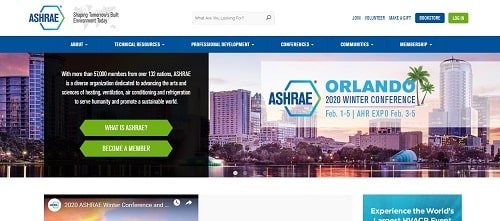

Today’s major industries all face a push toward cleaner and more energy-efficient equipment solutions. Among them, heating, ventilation and air conditioning (HVAC) units remain some of the largest energy consumers at commercial sites throughout the world. Building owners and operators at these locations are regularly looking for ways to reduce cost without losing capability. As the HVAC industry continues to balance efficiency with cost and other factors such as environmental friendliness, there is a constant demand for new equipment designs.
With so many potential changes and evolving requirements, there is an important need to maintain consistency, safety, and stability among building owners and manufacturers. Within the HVAC industry, there are a number of organizations that maintain relevant standards including the Sheet Metal and Air Conditioning Contractors’ National Association (SMACNA), the National Fire Protection Association (NFPA), and the Institute of Electrical and Electronics Engineers (IEEE). Each of these entities works, through the influence and expertise of its members, to provide its own comprehensive listing of standards and supporting documentation.

Screenshot via American Society of Heating, Refrigerating and Air-Conditioning Engineers (ASHRAE)
One of the largest among these organizations is the American Society of Heating, Refrigerating and Air-Conditioning Engineers (ASHRAE) which has been around for more than 120 years and continues to have a major influence over the modern HVAC industry. Particularly for commercial HVAC, the ASHRAE standards are federally recognized and play an important role in ensuring compliant HVAC system design. The ASHRAE organization also makes a number of important contributions to the industry beyond their standards.
In today’s guide, we’ll discuss:
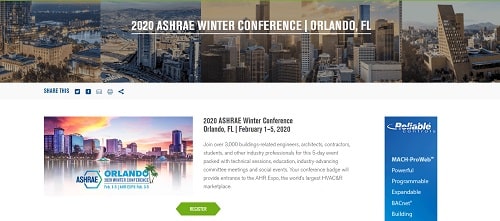
Screenshot via American Society of Heating, Refrigerating and Air-Conditioning Engineers (ASHRAE)
As new heating and cooling technologies began to emerge in the late 19th century, the need to organize the many industry professionals led to the formation of the American Society of Heating and Air-Conditioning Engineers (ASHAE) in 1894. This was followed shortly after by another group, The American Society of Refrigerating Engineers (ASRE), founded in 1904. These organizations operated independently until 1959 when a merger was approved that formed the American Society of Heating, Refrigerating and Air-Conditioning Engineers (ASHRAE).
Since that time, the global organization has worked to further the use of sustainable technology in building systems and energy equipment used within the HVAC industry. They support a global network of over 57,000 members in 132 nations and utilize research, published works, and ASHRAE standards to influence the direction of practices and trends. Their active membership includes a number of activities in support of industry standardization and advancement including training, technical summits, and conferences.
In recent months, ASHRAE has released a new HVAC Applications Handbook which has been updated for 2019 and includes 65 chapters covering a wide range of facility and engineering design topics. They have also recently opened registration for the 2020 ASHRAE Winter Conference that will be held in Orlando this coming February. The winter gathering along with an annual conference is their largest event, offering opportunities to attend some of the 600 planned meetings at each event, including technical workshops, training, and certification exams. You can find up-to-date information by visiting the organization’s events calendar.
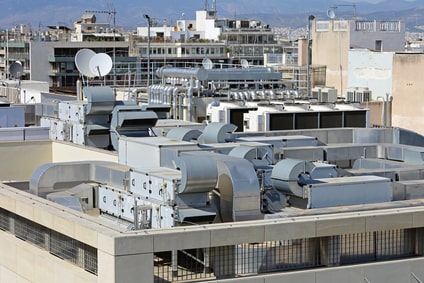
Within industries that rely greatly on technology and engineering, standards are put in place to define an industry’s minimum technical requirements, procedures, and guidelines. Such standards play an important role in influencing local regulations and codes. In the United States, such standards are developed as voluntary consensus standards that are maintained by recognized industry organizations. In other words, there are no federally mandated standards for many industries, but federal and state governments typically work together with these industry organizations to ensure that guidelines are followed. This allows the subject matter experts within each industry to define the detailed standards from which to work from.
Within the HVAC industry, ASHRAE standards are a leading reference. For example, the ASHRAE Standard 90.1: Energy Standard for Buildings Except Low-Rise Residential Buildings is recognized by the U.S. Department of Energy (DOE) as the reference standard for commercial building energy efficiency. Each individual state is responsible for maintaining its own set of building and design codes, based upon ASHRAE and other standards. ASHRAE recognition at the federal level helps to encourage wider adoption of their latest standards among states.
ASHRAE has approximately 87 active standards and guideline project committees. These groups regularly review relevant industry topics such as thermal comfort, indoor air quality, and reducing refrigerant emissions. The standards themselves include guidelines such as methods of testing for rating purposes, installation procedures, and other relevant information useful to the industry. They maintain a numerical index including the titles of all standards on their website along with detailed descriptions of their committee selection process.
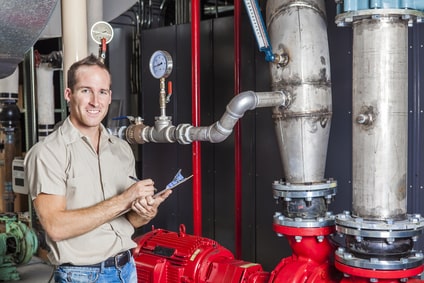
HVAC system designers must be familiar with a number of federal, state, and local regulations along with industry standards maintained by a number of organizations. Having a thorough understanding of the various guidelines helps ensure that each new build incorporates the very latest industry knowledge, skills, and technology. This not only helps to achieve compliance but also leads to safer and more energy-efficient systems.
Building owners and clients continue to push for commercial HVAC systems that are more efficient, lower cost and more environmentally friendly. As a result, manufacturers are constantly developing new designs to meet these needs. A few potential design changes being evaluated currently based on HVAC industry trends are:
According to the U.S. Department of Energy, over half of U.S-based commercial real estate locations are cooled with packaged HVAC equipment. The market for these systems is huge, and regulations can have far-reaching impacts on system designs. The latest version of commercial HVAC standards (ASHRAE 90.1-2013) has seen adoption by five states, while the remaining states are either adhering to older standards or have not yet created their own standard code. This is likely to change as a desire for efficiency continues to pressure the market.
Regulations can have a direct impact on system designs, such as the federal energy efficiency mandate from the U.S. DOE which has created a benchmark for an average of 13% energy efficiency improvement from 2018 and future improvement in energy efficiency of 16% for new commercial units manufactured from 2023. System manufacturers have redesigned HVAC equipment to meet 2018 minimums and continue to update their portfolios to include new mid- and premium-tier product offerings that meet these levels.

Screenshot via ASHRAE
ASHRAE maintains a very active professional development presence and offers a variety of learning opportunities thought instructor-led training courses, e-learning on-demand content, certifications, and self-directed training. Through these services, ASHRAE is able to support the worldwide adoption of their standards and provide individuals and teams at all levels with access to training. The options vary greatly with respect to time commitment, cost, and scope depending on your particular needs.
The eLearning training includes over 90 technical courses for individuals along with corporate programs that can be tailored to specific needs. Two active courses related to ASHRAE standards include Standard 189.1 for High-Performance Green Buildings – Energy Efficiency and Using Standard 90.1-2010 to Meet LEED Requirements. The content for these courses can be viewed directly from any browser, giving individuals a convenient option to advance their studies at any time.
Self-directed training involves course books that can be completed by individuals at their own pace. They are ideal for practicing professionals and recent graduates who are looking for a flexible learning option. Many of the coursework covers an essential overview of each topic that is drawn from the standards and ongoing technical research of the organization. Specific topics include Fundamentals of Heating Systems, Fundamentals of Refrigeration, and Fundamentals of Thermodynamics.
A wide variety of instructor-led seminars and short courses are offered through the ASHRAE Learning Institute (ALI). These are provided as intensive, authoritative reviews of important technical topics with instructors comprised of ASHRAE members, university faculty, and full-time engineers. A number of sessions are offered online, such as 3-hour short courses covering specific topics like the Commissioning Process and Standard 202. Having access to such a large offering of learning opportunities directly from the source of commercial HVAC industry standards makes ASHRAE an important resource for manufacturers.
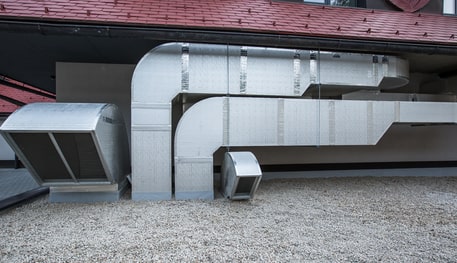
The ASHRAE certification programs are recognized by over 30 national, state, and local government bodies, and over 3,000 certifications have been awarded to date. They stand as important credentials within the HVAC industry and were developed by ASHRAE’s extensive membership pool of industry experts and practitioners. Their goal is to offer an education on the very latest teachings in building design and system operation. They are constantly updating the certification training material with the latest best practices.
Their most recent course offering is the ASHRAE Certified HVAC Designer (CHD) credential. This certification is used to demonstrate competency in the ability to design HVAC systems that meet building and project requirements. Areas of focus include load calculations, mechanical equipment room design, duct and piping design, and creating layouts for permits and construction. All new applicants must meet certain eligibility requirements, and these can be reviewed in the CHD candidate guidebook. Applicants who meet the requirements can easily apply online and receive instructions for completing a computer-based test that will be used to judge competency.
ASHRAE regularly posts schedules for certification exams that can be taken at locations worldwide. They offer a few important tips for exam preparation, and a candidate handbook is available for download to those planning to apply. The handbook helps clarify the scope of the examination and suggested training and experience applicants should have prior to testing. Receiving a certification such as the ASHRAE CHD demonstrates advanced knowledge of the chosen subject and can have a number of professional benefits.
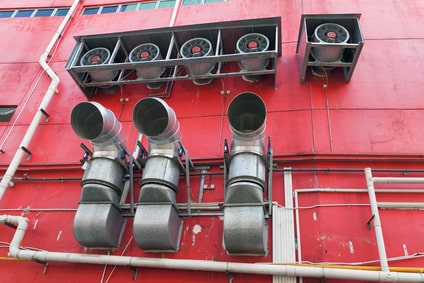
In a recent “Industry Need” survey by ASHRAE, 74% of respondents with influence over hiring decisions at their organizations indicated that they utilize the Certified HVAC Designer designation as a tool for identifying competent new-hire prospects. It clearly has recognition within the industry along with the other ASHRAE certifications. A certification with ASHRAE helps to ensure that employees, employers, and clients such as building owners can all share the same confidence that proper skills and knowledge are applied to each job.
Completing a certification with ASHRAE demonstrates a thorough knowledge of technical, safety, and HVAC industry best practices. There is a recertification requirement in place that ensures all certifications are maintained to the latest standards. Having a certification can help elevate the reputation of engineers and the organizations that employ them while giving them a clear achievement as part of their professional development plan.
Industry requirements for energy efficiency continue to evolve, and HVAC manufacturers will need to keep up with the latest guidelines in order to stay competitive. In such a fast-paced environment, the agreed-upon standards that govern many aspects of the design process are as important as ever. ASHRAE has a true leadership position in the HVAC industry and offers a number of useful resources for engineers and manufacturers.
For additional details about the ASHRAE standards and the impact they can have over your HVAC manufacturing business, you can visit the following resources:
Our sales engineers are experts in automatic asset tracking, tagging and identification,a nd can answer all your questions. Get in touch now.
Lets Talk ›